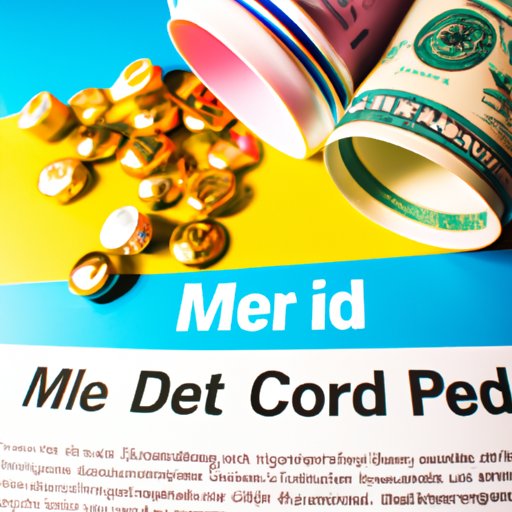Introduction
Medicare Part D is a federal program designed to help cover the cost of prescription medications for eligible seniors. It is an optional benefit that can be added to existing Medicare coverage, and provides access to prescription drugs at a lower cost than many other forms of insurance. While there are some out-of-pocket costs associated with Part D, it is often much less expensive than purchasing medication without insurance. However, many people wonder if Medicare Part D is free or not. In this article, we will explore the costs, benefits and eligibility requirements of Medicare Part D in order to answer this question.

Exploring the Costs of Medicare Part D and How to Find Free Coverage
The cost of Medicare Part D depends on the type of plan you choose. Most plans require a monthly premium, and may also include a deductible and copayment for medications. The exact amounts vary depending on the plan, but typically range from $10 to $100 per month. Some plans may also have an annual deductible, which is the amount you must pay before your plan begins to cover medications. Copayments for medications can range from $0 to several hundred dollars per prescription.
In addition to these out-of-pocket costs, there are also other ways to get free coverage through Medicare Part D. Many plans offer additional discounts or incentives to those who meet certain criteria, such as low income or long-term care needs. Additionally, some states offer programs that provide free prescription drugs to eligible seniors. These programs may cover all or part of the cost of medications, and may even include free generic drugs.
Analyzing the Impact of Medicare Part D on Seniors’ Finances
When considering whether or not to enroll in Medicare Part D, it is important to consider the potential financial impact. On the one hand, Part D can provide significant savings for those who take multiple medications each month. By taking advantage of discounts and incentives, seniors can reduce their out-of-pocket costs significantly. Additionally, Part D can provide peace of mind by eliminating the worry of paying for expensive medications.
On the other hand, it is possible that Part D could actually increase a senior’s out-of-pocket costs. Depending on the plan, copayments for medications may be higher than the cost of purchasing them without insurance. Additionally, some plans may require higher premiums or deductibles than others, which could add up over time. Therefore, it is important to carefully consider the costs and benefits before deciding whether or not to enroll in Medicare Part D.
Understanding Eligibility Requirements for Medicare Part D
In order to qualify for Medicare Part D, a person must be enrolled in Medicare Part A or Part B and living in the United States. Additionally, they must not be covered by another form of prescription drug coverage, such as Medicaid or a private insurance plan. Those who meet these criteria can then apply for Part D coverage by visiting the official Medicare website or calling their local Social Security office.
Once enrolled in Part D, seniors must re-enroll each year to maintain their coverage. During this process, they will be asked to select a plan that best meets their needs and budget. Medicare will then review the application and determine whether or not the applicant is eligible for the plan they have chosen.
Conclusion
In conclusion, while Medicare Part D is not free, it can be an affordable option for seniors who need prescription drug coverage. By comparing premiums, deductibles and copayments, seniors can find the plan that best meets their needs. Additionally, there may be opportunities to get free coverage through state programs or other incentives. Finally, it is important to understand the eligibility requirements for Medicare Part D before enrolling.
Overall, Medicare Part D can be an invaluable resource for seniors who need assistance with prescription drug costs. By understanding the costs and benefits, as well as the eligibility requirements, seniors can make an informed decision about whether or not to enroll in Part D.
(Note: Is this article not meeting your expectations? Do you have knowledge or insights to share? Unlock new opportunities and expand your reach by joining our authors team. Click Registration to join us and share your expertise with our readers.)
